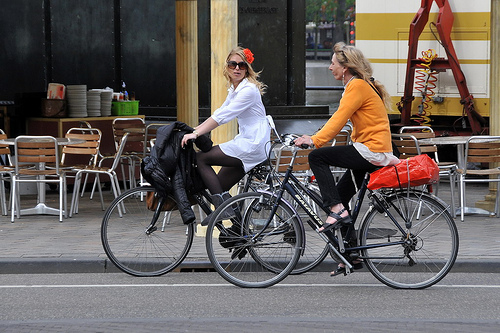Millennials leading the way in carless commuting
While baby boomers continue to drive to work en masse, recently released census data suggests that transportation-related change is afoot. Commuters, led by young workers, are moving towards carless transportation, opting increasingly for public transport and walking, reports the Brookings Institution.

The 2014 American Community Survey reinforces what researchers have suspected for awhile: the incoming cohort of commuters takes an increasingly dim view of cars. From FaceMePLS.
Census information from the 2013 American Community Survey points out the specifics: workers aged 16 to 24 are commuting “the least” by car when compared to all other age groups. And the drop in young commuters who opt to drive has fallen by almost 1.3 percentage points in large metro areas since 2007; yet the drop isn’t so much a recent trend as it is a steady decline. The same age group has been experiencing a decline in car commuting over the last three decades.
Despite the drop, it does remain true that most commuters still drive to work: over 85%, or about 122 million commuters, who, by and large, drive alone and don’t carpool. Yet the census data illuminates a few interesting changes in the way we commute. For one, the percentage of commuters who drive to work nationwide is dropping for the first time in years, from 86.5% in 2007 to 85.8% in 2007.
Another finding of the census data: public transportation, biking and walking have become increasingly relevant options, despite car commuting’s prevalence. Public transportation, for example, clocked in the highest number of passenger trips since the mid-1950s. Biking and walking commuters now account for almost 4% of all commuters. And, interestingly, non-commuters — people who work from home — now account for as many as those commuters who take public transport to work.
These changes are largely happening in major metro areas. There has been a significant decline in driving to work between 2007 and 2013 in perhaps unsurprising locales such as Los Angeles, Seattle, Boston and Miami, but other unexpected areas like Tucson and Albany have recently increased their transit shares. Young people are the top users of public transportation and walking as commuting means, in these large cities as well as smaller areas and university towns including New Haven, Austin and Syracuse.
Though young millennials lead the pack, the dip in car commuting is also attributable to older commuters. Generation X and older millennials are driving less, and “shifting away from private vehicles in nearly equal numbers,” reports the Institute. The driving rate dropped among workers aged 25 to 54 by .9 percentage points over 2007 to 2013. (“.9” may not sound impressive, but it works out to about 750,000 drivers changing their means of commuting. That drop occurred in two-thirds of the country’s major metro areas, including Portland, Honolulu, and Philadelphia.)
Those aged 55 and over are part of the only demographic to drive more since 2007. The data perhaps begs more questions than it answers: How will commuting choices change as baby boomers grow older and driving becomes a more dangerous proposition? Will millennials opt for car commuting as they start their own families, or is their changing transport preference a truly sustainable move towards a greener future?
Want to learn more? Explore more of the census data, and check out this useful report: A New Direction: Our Changing Relationship with Driving and the Implication for America’s Future.
Related Posts
Category: Transportation

















